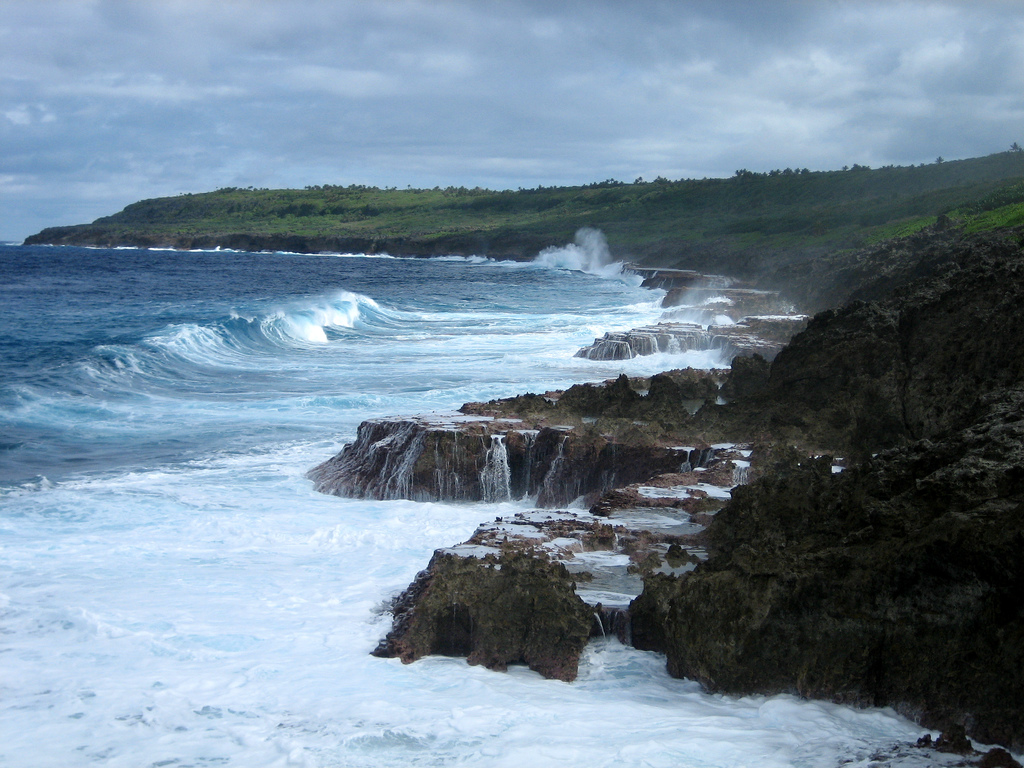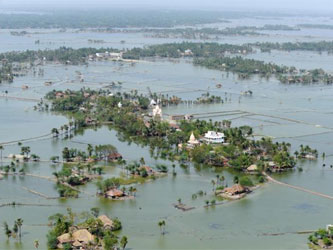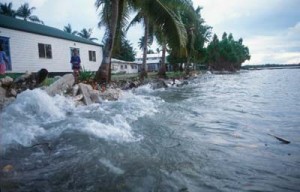Climatologists are predicting a significant – and frightening – rise in sea levels over the next century. What does this mean for the world’s small islands?
It is a little-known fact that December 24th, 2006, was a momentous day in human history. This date marks the announcement by researchers at India’s Jadavpur University that, for the first time in recent history, they had recorded an inhabited low-lying island – Lohachara, in the Ganges Delta – falling beneath sea level. Once home to more than 8,000 inhabitants, this disappearing isle is now just one of India’s lost islands, numbering a dozen or more in the Delta. The mainland has becoming crowded with displaced refugees, economically untenable in a place where most can barely subsist already.
Imagine this plight on a national scale – affecting not just a few isolated patches of land, but an entire island country. Right now, over 10,000 people are facing the imminent disappearance of their homeland, with nowhere to turn. This is Tuvalu, located 1,100 km north of Fiji in the South Pacific. Here, the real threat of climate change has caused so much instability that on January 14th, 2011, the government was forced to declare emergency rule. The country’s leadership is now under armed guard, and gatherings of more than 10 people have been banned. The country’s sole naval boat is standing sentry outside of the shoreline residence of the Prime Minister.
On average, the archipelago that makes up Tuvalu lies just 10 cm above sea level. At the current rate of sea level rise, the country will be just a memory within 50 years – sooner, if predictions are true that this rate will accelerate. And Tuvalu isn’t alone: remote Kiribati and the Marshall Islands are both planning evacuation strategies in case their islands are inundated.
While there have been media reports that New Zealand will patriate these climate change refugees, the NZ government has made a strong public denial. The country offers just a few hundred residency permits to South Pacific immigrants each year, and this has not been changed. As it stands, evacuees from Tuvalu and other countries in the region will simply have no safe harbour. At a meeting in Tonga to discuss climate issues in 2007, the Premier of the tiny nation of Niue voiced this sense of urgency. “It is very, very serious because if we don’t do something now, we are gone. That’s for sure.”
The inhabitants of the Carteret Islands, a low-lying atoll of Papua New Guinea, are considered some of the world’s first environmental refugees. Looking out from the islands’ shores, peaks of trees, once deep within a mainland forest, are just visible above the waters. In some areas, 50m of beachfront has been lost within a generation. The people of these islands – which have been inhabited for some 1,200 years – are being steadily evacuated to the PNG mainland.
As small countries of limited wealth – more often than not, merely subsisting – these South Pacific nations have minimal power on the international political scene. Intensive lobbying and public relations campaigns have brought their crises global attention – and the commitment of research and disaster relief funding from countries like New Zealand and Australia, although much of that help has yet to materialize. According to the leadership of these countries, their cries for help are, for the most part, falling on deaf ears. However, there are very good reasons that the world’s prosperous should be paying close attention to their plight.
On the opposite end of the wealth spectrum are, for example, those who purchase privately-owned islands. Carrying price tags in the millions of dollars, some of these expensive properties may also be in danger. While it can be risky – and not always legal – for international investors to buy islands in some South Pacific countries, places like Fiji and French Polynesia have an established history of private island ownership. Many of these islands are home to luxurious resorts operated by major brands like Sofitel and Shangri-La. For these islands, the economic cost of even a modest rise in sea levels could prove devastating. Dr. Farhad Vladi, the founder of the world’s largest island specialty firm, Vladi Private Islands, believes that the potential dangers of climate change have already entered the minds of his clients.
“The height of an island above sea level has certainly become more of a concern in recent years,” he said. “Our properties have ranged in height from perhaps 2.5m to an extraordinary 300m at the peak – I would say that the higher elevation properties may have an advantage in the coming years.” He added that while this may be a worry for some potential buyers, if sea levels rise enough to threaten even the lowest-lying island he offers, it would spell catastrophe for many of the world’s major cities.
There is perhaps no better reason to pay heed to the dire future predictions for Kiribati, Niue, Tuvalu, and other threatened island nations. If Niue is destroyed, then the buildings of Manhattan’s reclaimed Battery Park will be floating in New York Harbour. If Kiribati goes, then Venice will vanish. And should Tuvalu disappear beneath the waves, the mega-cities of Asia – Manila, Tokyo, Bangkok – will be periodically flooded, displacing tens of millions of people. These small isles are the proverbial canary in the coal mine, and we ignore them at our own peril.





